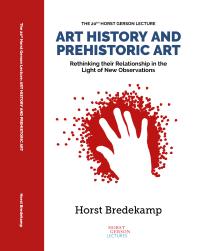Art History and Prehistoric Art: Rethinking their Relationship in the Light of New Observations: The Twentieth Horst Gerson Lecture held on October 4, 2019
Synopsis
The Twentieth Horst Gerson Lecture held in memory of Horst Gerson (1907-1978) in the aula of the University of Groningen on the 4th of October 2019
The point, from which we are defining the human ability to design artefacts and use symbolic signs is currently shifting to a more distant past. The insights responsible for this pushing back, are based, for example, on findings of very early human-shaped sculpture in Swabia, on the realization that human sign-making started literally hundred thousand years earlier than previously thought, as well as the realization that even hand-axes could carry symbolic meaning. Taken together, these phenomena call for a redefinition of the anthropos, in which the ability to design plays an eminent role. The lecture aims to show how the capacity to discriminate and creatively employ visual and material difference in the environment was a pre-condition for the development of human kind. Against this background, the question rises, if the fruitful collaboration between the fields of aesthetics, art history, and anthropology, that drove nineteenth century research into the origins of human creativity, can be revived.
Author Horst Bredekamp
Translated by Mitch Cohen
Graphic design by Tariq Jakobsen
Stichting Gerson Lezingen
Oude Boteringestraat 34
9712 GK Groningen
www.rug.nl/let/gersonlectures www.facebook.com/gersonlectures
Downloads

Downloads
Published
Series
Categories
License

This work is licensed under a Creative Commons Attribution-NonCommercial-NoDerivatives 4.0 International License.



